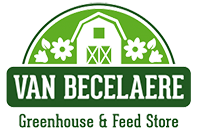Planting Fall Bulbs for Spring Color in Southeast Kansas

Posted on November 22, 2024 by Van Becelaere Greenhouse
As the crisp autumn air settles over Southeast Kansas, it’s time to think about adding a burst of color to your spring garden. By planting fall bulbs now, you’ll be rewarded with a vibrant display when winter’s chill gives way to warmer days.
Choosing the Right Bulbs
When selecting bulbs for your garden, opt for high-quality specimens that are firm, free of rot or mold, and a good size. Some popular choices for Southeast Kansas include:
- Tulips: These classic beauties come in a wide array of colors and shapes.
- Daffodils: Known for their cheerful yellow blooms, they’re also deer-resistant.
- Hyacinths: Fragrant and colorful, these make excellent additions to any garden.
- Crocuses: Early bloomers that signal the start of spring.
- Alliums: Ornamental onions that add architectural interest to flower beds.
With Bulbs, Timing Is Everything
In Southeast Kansas, the ideal time to plant fall bulbs is typically in October, but you can plant as late as November. However, you can continue planting if the soil is workable, usually up until about six weeks before a hard frost.
Preparing the Planting Site
Choose a full sun to a partially shady location in your yard or flower garden. Spring bulbs perform best near deciduous trees, as they’ll bloom before the trees leaf out fully.
To prevent bulb rot, make sure the soil is well-draining. If the soil is a heavy clay, amend it with compost or peat moss to improve drainage.
Planting Techniques
Follow these steps for successful bulb planting:
- Dig holes to the proper depth, generally 2-3 times as deep as the bulb’s height.
- Place bulbs with the pointed end facing up.
- Space bulbs approximately 4-6 inches apart, and a bit more for larger bulbs like tulips and daffodils.
- Cover with soil and water lightly.
- Add a mulch layer to regulate soil moisture and temperature.
Care and Maintenance
Once planted, fall bulbs require minimal care. In particularly dry areas, you may need to water occasionally during the growing season. After blooming, the foliage will naturally die back to help restore energy for next year’s flowers.
Companion Planting
Consider planting spring-flowering annuals like pansies or violas alongside your bulbs to extend the color show and hide fading bulb foliage. These low-growing plants will provide additional interest without competing with the bulbs for nutrients.
Bulbs in Containers
If you’re short on garden space, try planting bulbs in containers. Use a potting mix that drains well and ensure the containers have drainage holes. In Southeast Kansas, you may need to provide extra protection for containerized bulbs during severe cold snaps.
Planning for Continuous Bloom
To enjoy a longer flowering season, plant a variety of bulbs that bloom at different times. Start with early bloomers like snowdrops and crocuses, followed by mid-season daffodils and tulips, and finish with late-spring alliums.
Naturalizing Bulbs
For a more informal look, try naturalizing bulbs in your lawn or woodland areas. Daffodils and crocuses are particularly well-suited for this technique. Simply scatter the bulbs and plant them where they fall for a natural-looking display.
By investing a little time this fall in planting bulbs, you’ll create a spectacular spring show that will brighten your Southeast Kansas garden year after year. As you tuck these little packages of potential into the earth, imagine the joy of seeing the first green shoots emerge, heralding the arrival of spring and the colorful display to come.
Consider stopping by Van Becelaere Greenhouse in Pittsburg, Kansas, to look around our 26 greenhouses. Our helpful staff can help you find whatever you are looking for, or they can let you know when something will be arriving.
